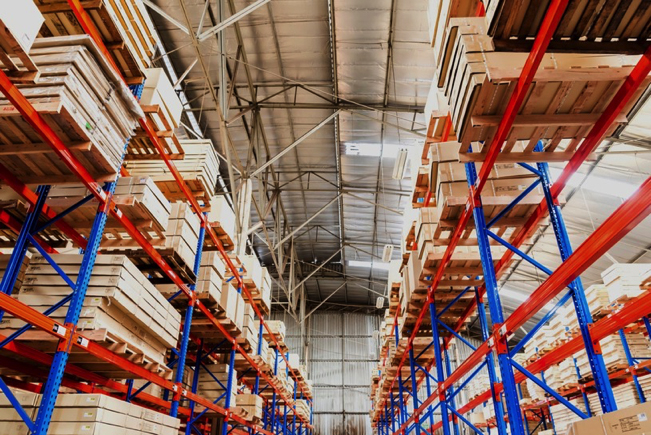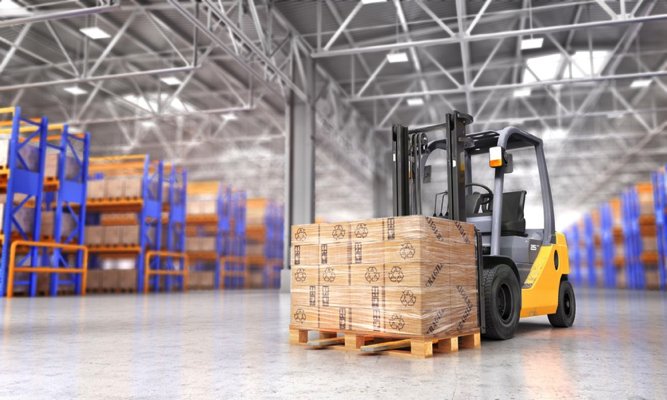
Erratic and unpredictable—the economic climate rarely stays stable. Maximizing profits for businesses takes a well-planned strategy to increase warehouse productivity while cutting down operations costs. Competition is rampant, and it can be easy for a warehouse to fall into the trap of spending money on things they do not need.
Reducing warehouse costs is at the top of the list for distribution professionals. At the same time, it is crucial the levels of quality and customer service continue to rise. Put simply, operating a warehouse is far from the easy task it looks to be.
Postponing an implementation of cost-cutting measures is not an option for most distributors. Even for an operation who believes they have cut every possible expense, there is still some room for improvement. Read the tips below to put your warehouse on the track to spending less and making more!
For the principle of supply and demand to work properly, a warehouse needs to have the proper product in buy-ready condition in the proper place at the proper time. Protection and accessibility are the cornerstones to making a warehouse add value to the products they ship. There are six requirements for making this happen with the effective use of:
Working within the parameters of these objectives, you can begin to narrow down where you are losing money and how to correct it.
Land cost is a big contributor to overall expenses. Smaller spaces are the most cost-effective and, by changing storage procedures, you can take advantage of storing more in less.
Aisles are essential to making navigation an easier process for machinery and workers. The quicker a product can be located in the warehouse, the sooner it is loaded on the truck for distribution.
Learn the dimensions of the various forklifts needed for every type of product. Sort your inventory by aisle dimension required for machinery access and reduce the width of inefficient aisles wherever possible.
Racking is the best option for efficient inventory storage and storage space optimization. By using this practice, you will see an increase in allowable square footage for pallets. Narrow and tall is the most common racking build. Make sure to consider the safety factor, so use the appropriate system of racking for your current inventory.
Billions of dollars are lost every year in warehouses. Some of the losses occur because of misplacement or theft, and the rest results from stock damage.
Proper packaging and storage procedures help to eliminate unintentional damage. Extensive training for employees is also crucial.
Using proper control systems will avoid major product misplacement. Consider using RF, RFID, or VDP if appropriate. Post guards at doors and designate one or two for employees and visitors entering and leaving the warehouse.
Theft can occur both internally and externally. Warehouses are high-value targets for thieves simply because of the dollar value of product inventory.
To reduce the chances of theft in your warehouse, control all access points by keeping doors locked. Implement a key card system if necessary.
Install state-of-the-art security systems and, if your warehouse does not run 24/7, use a rotational guard system during off hours.

Transferring products directly to the customer from the supplier reduces costs by cutting out the middleman. The use of a cross docking terminal works simply. Incoming goods on your transportation vessels unload, and then they are transferred quickly to outbound vessels slated to head out for customer delivery.
Cross docking saves both time and money on product management and storage, delivery and shipping, product transference, and labor costs.
Buying used, versus new, containers to ship or store perishable and nonperishable warehouse inventory could save consumers up to 40%. High quality used containers can include pallet containers, metal bins, wire baskets, food trays, IBC totes, Gaylord boxes, drums, and more. Well established vendors of used industrial containers oftentimes ensure the product has been inspected, cleaned and rinsed where applicable, particularly with food grade containers. It’s a no-brainer to utilize used containers with such great savings!
Reducing energy-associated costs can make a huge difference to your bottom line. There are many ways to do this, and two of the most significant are better building insulation and an automatic lighting system. The cost of these improvements will pay for themselves with relative speed, and you will notice the savings right away.
Install windows wherever appropriate to obtain as much natural light as possible. Not only will this reduce the electric bill, but it can also drastically help with heating costs in the winter by harvesting the power of the sun.
Another area often overlooked is water. Consider reducing the consumption in little ways such as automatic flush low flow toilets and hands-free faucets.
Labor is an enormous chunk of any warehouse’s operating budget. Paying employees less is not an option, but reducing their dwell time will improve profits overall. Time is money, and idle employees are not contributing to the coffers.
There are several other suggestions to put into place immediately. Focus on employee retention. It is less expensive to pay an experienced employee than it is to hire and train a new one. Offer cross training and provide continual training seminars on new procedures to improve productivity.
Additionally, automation will significantly reduce costs if this is an option. Although there will be a high outlay of funds for installation and new maintenance costs, machines can run as long and as often as they are needed.

There are numerous ways in which to make technology work for you. If you are not already using a dedicated warehouse management system, it is time to implement one. Having critical information and specs at your fingertips saves time and makes it simple to find whatever is required.
Think about having a voice-directed picking system initialized. At the same time, both put-to-light and pick-to-light systems will further streamline warehouse processes.
It may also be prudent to install RFID portals at strategic points throughout the warehouse. Making it easier to find misplaced or lost inventory saves on overall labor costs.
There is no getting around the fact that it costs money to run equipment. However, there are some ways to make cuts without compromising your standards.
Use each piece of equipment for more than one task when possible. It is not cost-effective to run two separate pieces when one can do both jobs.
Set up a regular maintenance schedule with the vendors who service your equipment. Ensuring everything is in good working condition with preventative measures will reduce the instances of unexpected breakdowns.
Think carefully about renting equipment you only use on an occasional basis. The purchase outlay required to leave equipment sitting idle does not make financial sense. Along the same vein, consider the costs of leasing versus outright buying of needed machinery.
Once starting to dig into every facet of how your operation runs, you can determine where cost-cutting measures are needed the most. As each measure is implemented and costs decrease, financing the more expensive options with savings is the logical progression.
Each change that is made will likely lead to finding other ways to cut costs in related areas. Every warehouse is different, and some ideas will not work for all. Just keep in mind that each measure results in immense potential gains over the long-term.
In this episode, I sat down with Beejan Giga, Director | Partner and Caleb Emerson, Senior Results Manager at Carpedia International. We discussed the insights behind their recent Industry Today article, “Thinking Three Moves Ahead” and together we explored how manufacturers can plan more strategically, align with their suppliers, and build the operational discipline needed to support intentional, sustainable growth. It was a conversation packed with practical perspectives on navigating a fast-changing industry landscape.